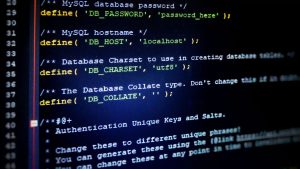Why Docker on BSD Systems Gains Attention
Running Docker on BSD might seem unusual at first, but it opens many doors for developers and system administrators. BSD systems are known for their stability, security, and performance, making them an appealing choice for managing containerized applications. While Docker is most commonly associated with Linux, understanding how to install and configure Docker on BSD allows users to bring powerful container features to a BSD environment without sacrificing the system’s core strengths.
In many production environments, developers want to keep using their BSD servers without giving up the flexibility Docker offers. Whether for hosting microservices, setting up test environments, or deploying apps efficiently, Docker can fit smoothly into the BSD workflow when installed properly—especially when paired with advanced file systems like ZFS for robust data integrity and snapshot capabilities.
Learning how to set up Docker on BSD is about combining the best of both worlds. It brings together BSD’s renowned reliability with Docker’s fast, lightweight container management to create a more versatile system.
Choosing the Right BSD Variant for Docker
Not all BSD flavors handle Docker the same way. FreeBSD is the most popular option for those wanting to run Docker, thanks to its strong community and active support for containerization tools. For anyone exploring how to install and configure Docker on BSD, FreeBSD stands out as the most accessible and well-documented starting point. Although Docker does not natively run on BSD kernels, FreeBSD users can access Docker through virtualization layers or Linux compatibility features.
GhostBSD, MidnightBSD, and others might offer Docker through ports or packages, but the process is often trickier. FreeBSD usually provides the most straightforward path for anyone serious about getting Docker up and running without heavy modifications.
Choosing a well-supported variant saves time, reduces frustration, and ensures a smoother experience when working with containers. Starting with FreeBSD minimizes the learning curve and offers plenty of helpful resources.
Preparing the BSD Environment for Installation
Before diving into how to install and configure Docker on BSD, the system needs a few essential preparations. Ensuring the system is up to date helps avoid compatibility problems. It’s a good habit to refresh system packages and apply any recent security patches before adding new software.
Another key step is verifying that the system has the Linux compatibility layer enabled if needed. Some Docker methods on BSD involve using a small Linux virtual machine to run Docker commands and manage containers.
Proper system preparation lays the foundation for a more stable Docker installation. Skipping this step can lead to unexpected errors later, turning a simple setup into a time-consuming troubleshooting session.
Installing Docker Through FreeBSD’s Packages and Ports
FreeBSD provides several options to install Docker, but it often involves using the FreeBSD Ports Collection or precompiled packages. These methods simplify what would otherwise be a complicated build process. Tools like pkg make installing the base components straightforward.
One common route involves installing docker-freebsd or using LinuxKit or Pot, depending on project needs. Each method has trade-offs, but the goal is the same: creating an environment where Docker commands work naturally.
Taking the time to understand the package options pays off later when troubleshooting or upgrading. Knowing which tools are involved gives a deeper understanding of how everything fits together.
Configuring Networking for Docker Containers
Running containers successfully also means setting up networking properly. Containers often need to talk to each other or reach the outside world. BSD systems handle networking differently than Linux, so careful configuration ensures containers stay connected.
Some setups use Virtual Network Interfaces (VNET) and jail networking to manage container communication. Others rely on bridge interfaces linked to the host network stack. Choosing the right setup depends on security requirements and application needs.
Testing network connections after setup ensures that containers can reach the internet and communicate internally. A few ping tests can prevent problems that might only show up during production deployment.
Setting Up Persistent Storage for Docker on BSD
Data inside a container is temporary unless mounted to persistent storage. In BSD environments, setting up storage correctly means creating datasets or mounts that survive container restarts or upgrades.
ZFS is often the preferred choice on BSD systems because of its excellent handling of snapshots and backups. Configuring Docker to use ZFS pools or other reliable file systems helps protect valuable application data.
Making storage planning part of the initial setup avoids losing data during unexpected shutdowns or maintenance windows. A little preparation keeps applications running smoothly and users happy.
Managing Docker Services with BSD System Tools
Once Docker is installed, managing it properly ensures uptime and performance. On BSD, traditional service management tools like service or rc.d scripts help control Docker’s behavior.
Setting Docker to start automatically during boot prevents downtime after a server restart. BSD users can create simple service scripts to ensure Docker and its components always come back online without manual intervention.
Monitoring services actively helps catch problems early. Using familiar BSD tools to keep Docker healthy fits naturally into established system administration practices.
Troubleshooting Common Installation Problems
Not every Docker installation goes perfectly the first time, especially on BSD systems. Common problems include missing kernel modules, networking misconfigurations, and Linux compatibility issues.
Reading log files, checking service statuses, and testing basic container runs can reveal what’s wrong. The BSD community forums and documentation offer helpful advice for solving most issues.
Patience and careful troubleshooting often lead to quick solutions. Small problems that arise during installation are valuable lessons that make future setups easier and more predictable.
Keeping Docker and BSD Systems Updated
Technology changes fast, and keeping both BSD and Docker updated ensures better security and access to new features. Regularly checking for package updates, applying security patches, and reading Docker release notes keeps systems healthy.
Some administrators prefer staging updates on test machines before applying them to production. This extra step avoids surprises that could affect running applications or critical services.
Treating updates as a routine task rather than an emergency response keeps maintenance stress levels low. A predictable update schedule makes the system feel more reliable and professionally managed.
Building a Stable Development Environment with Docker on BSD
A BSD system running Docker offers developers a stable, secure platform for building, testing, and deploying applications. Setting up a clean environment lets teams work faster and more confidently, knowing that containers will perform consistently.
Combining BSD’s proven reliability with Docker’s flexibility creates an environment ready for anything from small projects to full-scale production deployments. Careful planning, configuration, and monitoring make all the difference in achieving lasting success.
Taking the time to set up Docker on BSD properly rewards developers and users alike with speed, stability, and the satisfaction of a system that works just the way it should.










No Responses